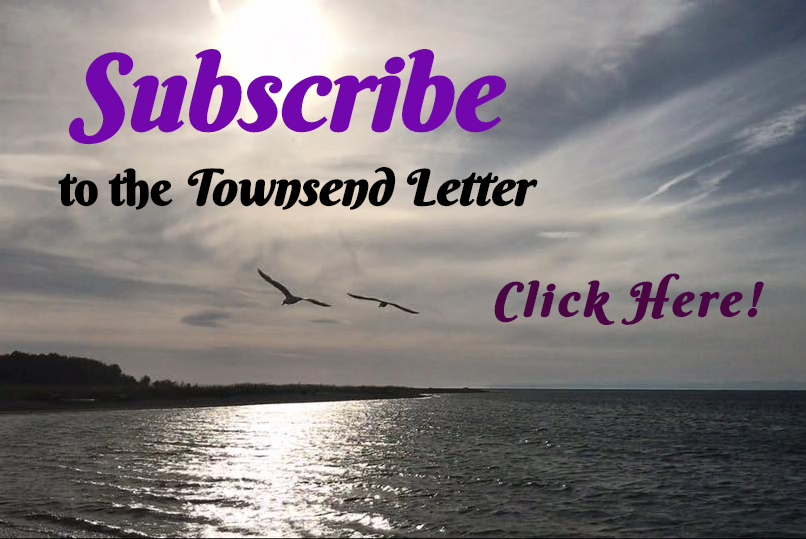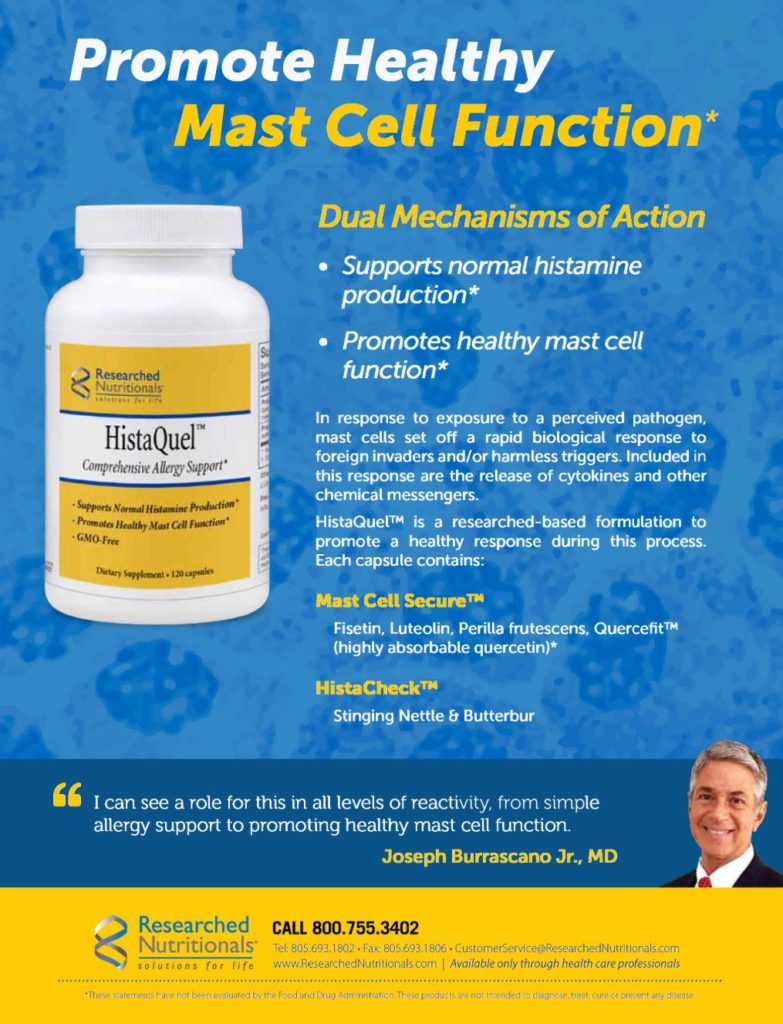by Jacob Schor, ND, FABNO
drjacobschor1@msn.com
Kurt Beil, ND, braved the Maine back roads and an ominous weather forecast and came up to visit me at our log cabin at the end of the road, in what I’m beginning to think of as my forest hermitage.
Regular readers of the Townsend Letter, and even more so the Natural Medicine Journal, should recognize Dr. Beil’s name as he is a regular contributor to both publications. He writes on one topic only, which is, not to be cliché, ‘the healing power of nature.’ That’s a phrase that is overused these days. Nowhere more so than in Colorado, Maine, and other states where recreational marijuana is now legal; Vis medicatrix has become an advertising slogan for pot dispensaries.

What Dr. Beil has been fascinated with and has made efforts to share with us over the years is the foundational phenomenon that underlies all of naturopathic medicine, that exposure to nature triggers a healing action in humans. In recent years this phenomenon has become well recognized and accepted in scientific and medical circles. Dr. Beil has been reviewing current studies in the Natural Medicine Journal for several years now and has promised to provide regular contributions to the Townsend Letter as well.
While “nature as medicine” as an idea has become recognized by modern medicine, it has been oddly slow to permeate naturopathic clinical practice. It is as if we talk so much about the ‘Vis Medicatrix Naturae’ as a philosophical concept that we forget that it is also a primary intervention our patients will benefit from. As far as Dr. Beil could tell me, not one of the naturopathic schools currently offer course work in nature as medicine. How many of us start out a treatment plan by telling a patient to spend a prescribed amount of time each day in a specific location experiencing nature?
So, what does one do with Dr. Beil, our profession’s prime proponent of forest bathing, when he shows up at your door as a cabin guest? My quiet life morphed into Dr. Schor’s summer-camp for burnt-out doctors. What do you do with someone who won’t stop talking about how curative nature is? Someone who, for all his talk, still seems like he’s from New York City and comes across as too loud, too brash, too rushed, too self-absorbed, too in a rush to update his social media accounts at every turn of the trail, too in love with his girlfriend to not be in constant communication, too much a poster child of modern techno life? It was simple.
Early to bed, early to rise, a two-hour kayak paddle and then some serious forest bathing. Forest bathing as a term doesn’t quite do justice to what I put that unsuspecting innocent through. I felt a little like Tom Sawyer doing his fence painting thing. For us to call it forest bathing would be like calling a daylong soak in a hot tub a sponge bath. Forest pressure immersion therapy might be a better term. I’ve had a bug in my head these past few months that I would like to be able to stroll the perimeter of our forty acres of forest each morning, as a form of morning meditation. In theory it could be an hour walk. The thing is we are surrounded by dense second growth Maine forest. Right now, though not quite a mile, it is a half day’s trek. There is no such thing as strolling; thrashing is more like it. Kurt became my trail building assistant. Following a compass bearing as best we could, we cut our way down the line, then tagged the line with surveyor’s tape, broke, cut and tossed dead fall off of what we imagined would be a trail, and then went back over it again with lopping and pruning shears. By the time Dr Beil headed home to New York, sections of the line are starting to feel walkable, vaguely reminiscent of a trail. The two of us can see where the path wends its way along, though some people might find it easy to miss.
Those few days entertaining my guest provided plenty of opportunities to chat, as I rested on various logs and boulders along our ‘trail.’ These chats allowed me to ask the more practical questions. Let me reconstruct some of those conversations.
Jacob Schor (JS): Imagine I’m sitting down with a patient and want to write a prescription for nature exposure. Where do I begin?
Kurt Beil (KB): The most important thing is to assess the patient’s needs as well as their abilities, access and interest. What are you trying to accomplish with them, and what are they willing to do? Not everyone is going to be comfortable going on a walkabout in the backcountry, and not everyone even has access to convenient transportation to get to a park. Everyone is an individual (as we know from everything we do). If you are talking about your specific population of patients in suburban Denver, that is probably different than someone that lives in Brooklyn (where I currently am writing from a coffee shop).
That said, if you are interested in the typical “average” person in a urban/suburban area that wants to have a “Park Prescription” there is now a great non-profit called Park Rx America, started by Dr. Robert Zarr (MD pediatrician in Washington, DC) that makes it all very simple. Practitioners can sign up, then put in their patient’s info including home zip code and it will generate a list of parks closest to them. It gives you fields to fill out an official ‘prescription form’ that will print for the patient and will send the patient reminders to their phone or email and keep track of how often they go. They are still building out their listings of parks, so until that is complete, the website is not that useful for many regions outside of their DC home area, but it will be a game changer once the website gets fully populated with enough parks listed to make it useful all over the country…https://parkrxamerica.org/. Check it out.
JS: How should I think about dosing? Are there considerations as to ‘wildness’? Is a city park a lower dose exposure than a dense forest?
KB: One of the nice things about dosing is that there is no risk of overdose! We are still discovering what exactly makes a good “dose,” but some recent studies have shown us important info in this area. One recent study from Exeter in the UK showed that the optimal amount of time in nature needed before diminishing returns start occurring is 120 minutes per week. That really isn’t that much time at all (less than 20 minutes per day, on average).
As far as urban vs. forest, that absolutely matters. One of the main criteria for having a “restorative” nature experience in terms of the physical and mental health benefits is the sensation of what is called “Being Away” or feeling that you are removed from the busy-ness and experiences of the modern world. So being in an urban park can be helpful, but if you can still hear traffic or see a lot of other people walking by, it is not as beneficial as going somewhere more remote to calm the mind and the nervous system.
JS: Does what I would call biotic density matter? For example, does a dense lush forest with more weight of organic matter have more impact than a dry desert where “life” is sparse?
KB: Again, we are just learning about these things. I’m not aware of any studies that have compared different biomes (e.g. forest vs. desert) and suspect part of that may be individual preference. But there have been a few studies out of the University of Illinois showing that visual density of vegetation in an urban/suburban location does have direct impact on health benefits. It seems the ideal amount of vegetation occupies about 25-45% of the visual field, which is enough to feel “green” but not so much that it obscures the view of other objects.
JS: I’ve read that Olmstead’s Central Park design of grassy meadows and clumps of trees, which mimics the African Savannah where humans evolved, is the most familiar and most soothing natural environment. Any truth to that?

KB: Yes! One of the early papers in this area of environmental psychology established exactly this, that one of the landscapes that is most universally preferred both globally and in the US is this kind of open area with scattered vegetation for protection and refuge that our proto-human ancestors likely lived in for tens or hundreds of thousands of years in Africa. This “Savannah Hypothesis” has been tested and verified; it is one of the foundational ideas in this area of study. I don’t think Olmsted himself was consciously aware of this effect (he pre-dated the formal hypothesis by 100 years…) and was likely just working with his own intuition and what he liked and didn’t like about other public spaces he had visited around the world.
JS: Don’t we have to worry about lions?
KB: Ha-ha. It depends on where you are! But yes, “nature” is not all calming trees and relaxing babbling brooks. There is certainly the “red in tooth and claw” aspect of nature that needs to be considered, as well as weather effects, dangerous terrain (and inadequate gear), multiple insect vectors that may carry disease, etc.… For the average person though, going on a walk in their local park, none of these concerns are really relevant but it is always worthwhile to consider what an outdoor experience may involve. As they taught us in Boy Scouts, ‘Be prepared.’
JS: Dosing, is there an optimum time or amount of nature per week. Is one full day better than two half-days or even 30 minutes several times a week? Do we worry about overdosing? Concerns about building up tolerance. Is there such a thing as too much of a good thing?
KB: As mentioned above, one study showed that 120 minutes per week seems to be the minimum optimal dose. Considering that our prehistoric ancestors evolved in direct connection with nature such that their outdoor time was 100% of the time, it is extremely unlikely that there is a maximum dose, or risk of overdose. As far as tolerance, some studies have shown there may be a leveling off effect such that further exposure past a certain amount of time doesn’t confer continual added benefits, but it isn’t like that extra time is detrimental. It just doesn’t seem to continue to get better and better until a person achieves total consciousness just by sitting under a tree (it takes additional internal work to do that, I’m told). By the way, that leveling off time seems to be three-to-four days of complete “away” nature time.
JS: Side effects, contraindications? Can you mix nature with a cellphone without adverse reactions? Are there synergistic things to add to nature that will enhance effect? (Dancing naked in moonlight say?)
KB: There are not any studies that I am aware of that have looked at these questions. This is some of the most interesting research yet to be done, in my opinion. One of the unique aspects of this area of research is that we are looking at the environment as if it were a health intervention, but the environment is a context, it is the field (sometimes literally) in which other things can happen that also may have an impact, either positively or negatively. In this way, it takes a true holistic perspective to understand all of the interacting stimuli, inputs, behaviors, etc. that might affect health.
Specifically, in terms of synergy, there are currently studies underway to look at the effect of various natural psychotropic plants on human consciousness, well-being and mental health. Some of these are now legal for medical and even recreational purposes. Traditionally these plants have been used in the natural settings in which they originated, and there is much anecdotal evidence that being out in nature may be the optimal environment for their use. It is going to be interesting to see how research scientists address and investigate the use of these medicines in their traditional natural contexts, rather than the typical “controlled” setting of a research lab. I would speculate that the synergistic effects would be positively cumulative.
J: If you are broaching this idea with patients for the first time and they are ‘nature naïve’ and totally unfamiliar with the concept that it offers health benefit, where do you start?
KB: Because “nature” is primarily about environmental context, I start by asking them where they live. That can tell you a lot about their familiarity and openness to natural experiences, as well as give you an idea about their potential opportunities and access. I also ask them about their current level of nature or “green time” exposure, to gauge what they are doing right now. (As an aside, I always contrast this by also asking about their digital “screen time” exposures, since this is the flip side of the same coin). From there, I get a sense if recommending going to a park two-to-three times a week is something that they might be willing to do, or if just sitting in their backyard with their bare feet on the ground might be more their speed. For some people with social anxiety or who have mobility issues, I might even start with some indoor nature: buying some houseplants or a good quality nature poster or wall calendar and have them spend time with that. There are lots of options, and there is no one right thing for everyone. As always, we work with the individual where they are.
JS: Is there a trick to making this work?
KB: Finding what is going to work for them. If the various hypotheses and theories in this area are correct, we all have an inherent affinity for the natural world that is the result of millions of years of evolutionary adaptation. It is something that is a part of each of us because we are all living beings that evolved on planet Earth. It may take some work to find how an individual person best resonates with nature, but we all have it in us somewhere. As with many things in medicine, some of it is trial and error but once we find “it” the person instantly knows it is something that works for them. People will often say they’ve found a missing piece of themselves they didn’t even know was missing. When that happens, it can be a beautiful thing.
A Zen Sort of Thing
Fir trees are uncommon in this region, but my father got a deal on a box of seedlings forty years ago and my mother planted them. There are now fir trees leaning over three sides of the cabin. I go out each morning and sweep the needles off our back deck. If this isn’t done almost daily, they get tracked into the cabin. Seeing the overstory of needles above me with their endless capacity to drop onto the deck made me laugh. My desire to keep them out of the cabin is a lost cause, I’ll never keep up. Yet I went back to sweeping because that’s what I do.
What’s even funnier is that I’ve started walking the property perimeter with a rake so I can make our fledgling trail appear more distinct by moving the leaves about. That’s a kind of ridiculous idea, especially in October when this year’s deciduous leaves are on the verge of dropping. What’s the Greek myth, the one about the fellow trapped rolling a boulder uphill, Sisyphus? Kind of like that, pointless. Yet I’m trapped in doing so. Wanting to keep our floors and carpets clean indoors is one thing, funny enough on its own. Sweeping a path through a deciduous forest is past ridiculous. I laugh at myself for a few minutes, the absurdity of such a task, and then conclude, “It would be a Zen kind of thing.” Though admittedly I couldn’t explain to you what that means if you were to ask.
Still, the routine would be good for me. A good time to think. It’s good exercise; there’s nothing like raking wet leaves while walking uphill to build up that core strength thing everyone’s talking about.
Many of the things we do lose their point if one looks at them from too long or too wide a perspective. This is no different.
We spend our workdays trying to extend the lives of our patients, to preserve their health. Yet from another perspective, the one thing the world is not deficient in, is people. There is little rationale to think the world will be improved by increasing our human population further. Yet caring for people and preserving life is what we do.
I have to get my work boots on, find those work gloves to protect those hands accustomed to keyboards and pack a snack. I’ve got some intentional raking to do before this year’s leaves start to drop. There is some forest bathing waiting to be had.












